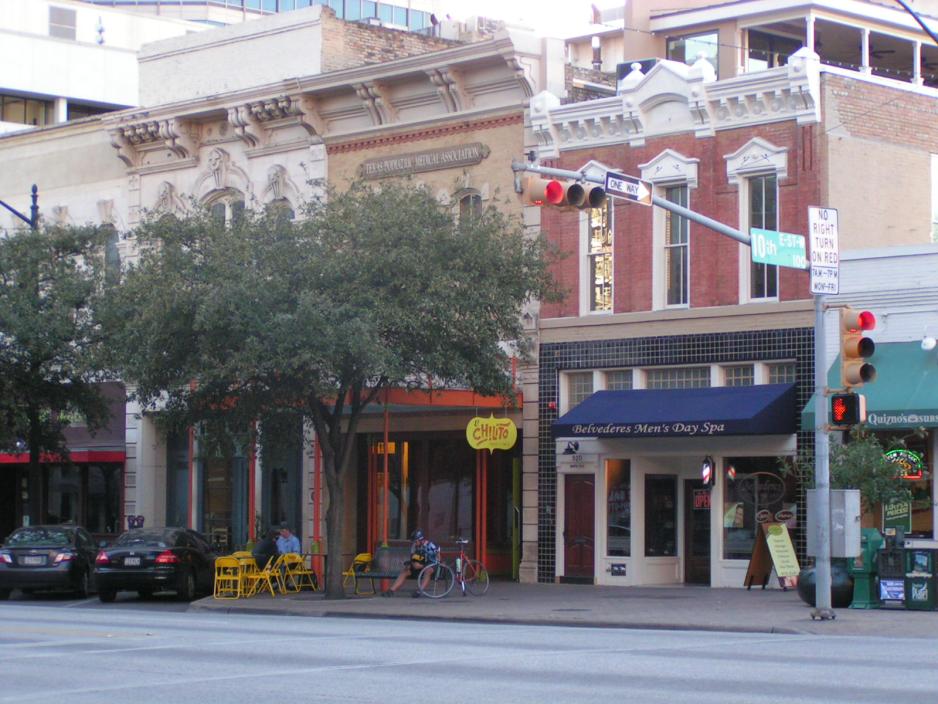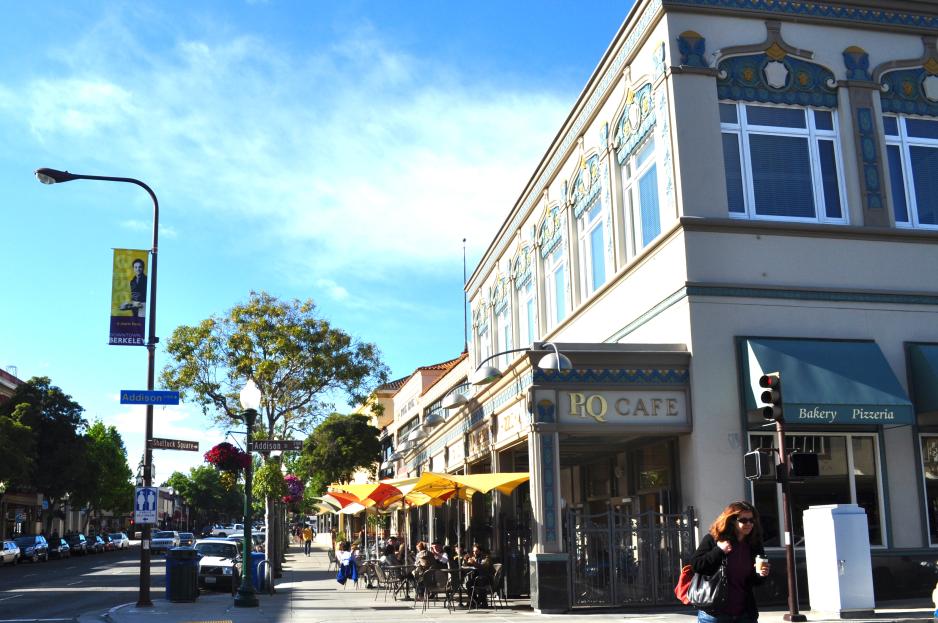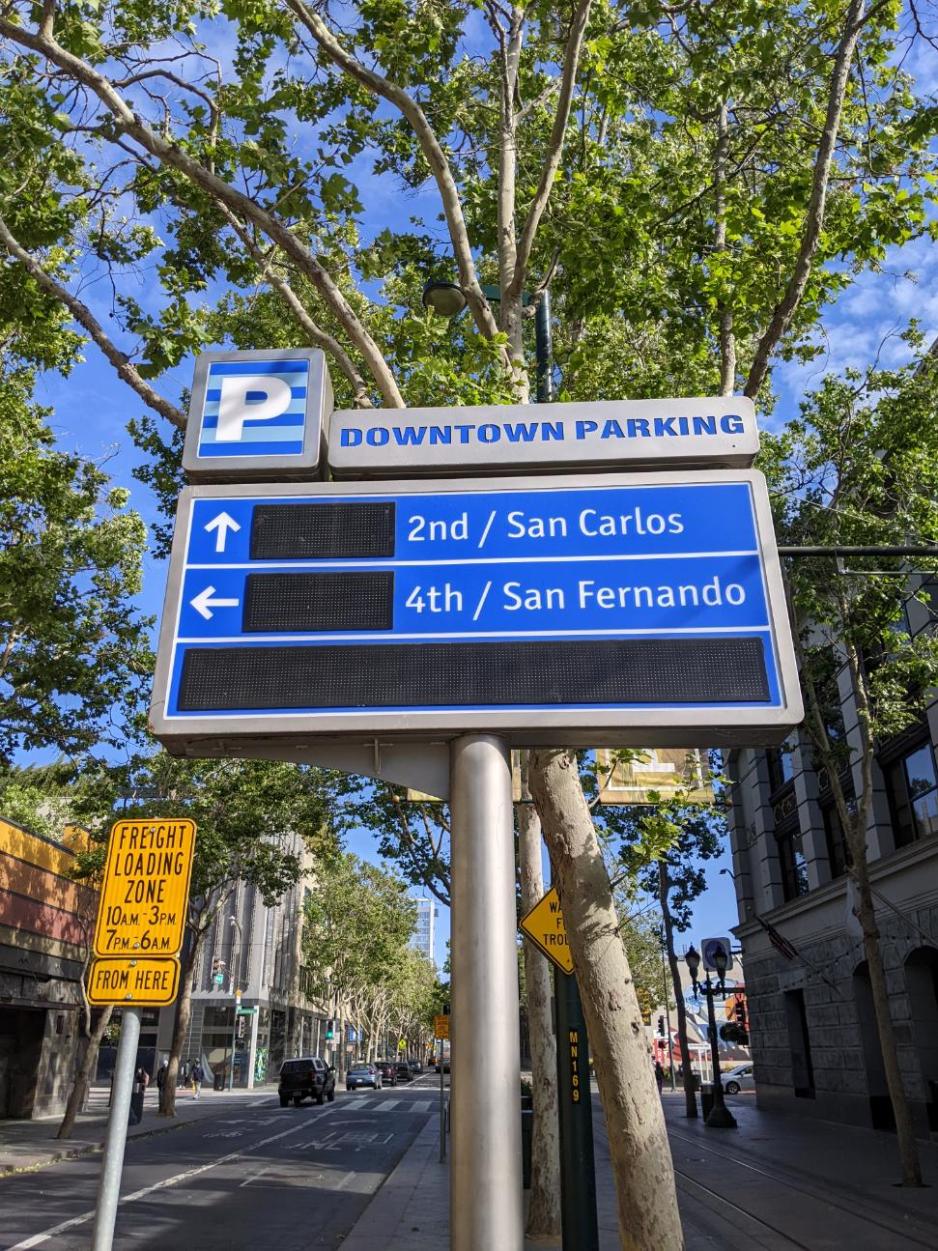Austin, TX, USA - Downtown Case Study
Austin, TX is a rapidly growing city with little room to expand for new development or to provide new parking. Because of these conditions, smaller businesses were being hindered from being in downtown due to the parking requirements. In 2013, Austin eliminated off-street parking requirements in the downtown area to enable businesses to decide on the appropriate amount of parking to meet their needs. The removal of minimum parking requirements shifted businesses from providing an oversupply of parking while reducing the cost and space need to support on-site parking.
The elimination of parking requirements started as a one-year pilot, which allowed businesses to reduce their required parking if they implemented transportation demand management (TDM) programs to promote alternative means of transportation and reduce individual vehicle trips. The program reduced parking requirements with little adverse effects on employees or the public, and reduced vehicle miles travelled.
Overall, the pilot supported downtown businesses by allowing them to provide an appropriate supply of parking to match their business needs rather than an oversupply of parking. It also supported small business expansion by removing the cost and space needed to support parking.
Berkeley, CA, USA - Reforming Parking Policies to Support Smart Growth Study
The City of Berkeley, CA implemented a Smart Growth Study to better manage their parking supply, especially within their downtown area. The City highlighted the importance of fostering non-motorized connectivity, specifically between the downtown BART Station and downtown. The reinforcement of these policies established parking pricing to balance supply and demand, encourage use of alternative modes, and discourage long-term parking at street meters intended for short-term parkers.
Some strategies implemented included: setting an 85 percent target for parking occupancy, establishing a rate and time structure to achieve desired occupancy, operating meters on high demand days, utilizing price rather than time limits to achieve availability, and eliminating monthly parking permits in garages. Other solutions included the creation of Parking Benefit Districts and transportation demand management (TDM) programs.
The resulting effort improved options to access downtown by active transportation modes, discouraged commuter parking, and shifted the spot parking issues by increasing use of garages from on-street parking.
San José, CA, USA - Parking Strategies Programs
The City of San José is a major destination in Silicon Valley for business and technology trade. The City needed to efficiently manage its parking system to meet the needs of all users. San José introduced wayfinding signage and parking guidance systems to manage supply and reduced parking rates for electric vehicles as a way of advancing sustainable practices.
For the parking guidance system, wayfinding signage was installed at public and private facilities based upon their occupancy profile, size, and proximity to popular destinations, presence of revenue control equipment, and operating practices. The signs display the number of spaces available in real time as well as messaging, such as event information, directions to another facility, or destination locations. The program reduced the need to construct more parking, reduced cruising by assisting drivers, and provided navigation assistance to orient visitors.
For the electric vehicle program, electric and hybrid vehicles are allowed to park free of charge in garages and on-street. The City has 50 charging stations that are located primarily in garages and on-street spaces and lots. The program supports clean air though the use of electric vehicles and increase percent sales of clean-air vehicles. To be eligible, the vehicle must display a Clean-Air Vehicle Parking Permit, which costs $30. Though parking is free through the program, users must adhere to posted time restrictions. There is also a $1 per hour fee to use the charging spaces or stalls. Advertisement of the program led to over utilization of the spaces, which may lead to an expansion of the program.


